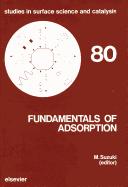| Listing 1 - 9 of 9 |
Sort by
|
Book
ISBN: 0824770552 9780824770556 Year: 1983 Volume: 14 Publisher: New York (N.Y.): Dekker,
Abstract | Keywords | Export | Availability | Bookmark
 Loading...
Loading...Choose an application
- Reference Manager
- EndNote
- RefWorks (Direct export to RefWorks)
Catalysts --- 54-44 --- Catalytic agents --- Catalysis --- Chemical inhibitors --- 54-44 Catalysts

ISBN: 0815506864 Year: 1978 Publisher: New Jersey Noyes Data Corp.
Abstract | Keywords | Export | Availability | Bookmark
 Loading...
Loading...Choose an application
- Reference Manager
- EndNote
- RefWorks (Direct export to RefWorks)
54-44 --- Catalysts --- -Catalytic agents --- Catalysis --- Chemical inhibitors --- Patents --- -Catalysts --- 54-44 Catalysts --- Catalytic agents
Book
ISBN: 012147450X 1322285616 1483191508 Year: 1977 Publisher: New York (N.Y.): Academic press
Abstract | Keywords | Export | Availability | Bookmark
 Loading...
Loading...Choose an application
- Reference Manager
- EndNote
- RefWorks (Direct export to RefWorks)
54-44 --- Catalysis --- Catalysts --- 544.47 --- Activation (Chemistry) --- Chemistry, Physical and theoretical --- Surface chemistry --- Catalytic agents --- Chemical inhibitors --- Catalysis. Catalytic reactions --- 54-44 Catalysts
Book
ISBN: 0723401640 Year: 1970 Publisher: London Wolfe
Abstract | Keywords | Export | Availability | Bookmark
 Loading...
Loading...Choose an application
- Reference Manager
- EndNote
- RefWorks (Direct export to RefWorks)
Chemical thermodynamics --- fysicochemie --- Industrial chemistry --- H (waterstof) --- Catalysts --- Hydrogen --- Ammonia --- Catalyseurs --- Hydrogène --- Ammoniac --- 54-44 --- Ammonia. --- Catalysts. --- Hydrogen. --- 54-44 Catalysts --- Hydrogène --- Nonmetals --- Catalytic agents --- Catalysis --- Chemical inhibitors --- Anhydrous ammonia --- Alkalies --- Nitrogen compounds
Book
ISBN: 0120571501 9780120571505 Year: 1975 Publisher: London: Academic press,
Abstract | Keywords | Export | Availability | Bookmark
 Loading...
Loading...Choose an application
- Reference Manager
- EndNote
- RefWorks (Direct export to RefWorks)
Metal catalysts --- 54-44 --- 541.128 --- Catalysts --- Catalysis. Acceleration and retardation of reactions by catalysts. Autocatalysis. Spontaneous combustion --- Metal catalysts. --- 541.128 Catalysis. Acceleration and retardation of reactions by catalysts. Autocatalysis. Spontaneous combustion --- 54-44 Catalysts --- Monograph

ISBN: 0471436240 9780471436249 Year: 2002 Publisher: New York: Wiley,
Abstract | Keywords | Export | Availability | Bookmark
 Loading...
Loading...Choose an application
- Reference Manager
- EndNote
- RefWorks (Direct export to RefWorks)
Air --- Catalysts --- Purification --- Equipment and supplies --- -Catalysts --- 54-44 --- 66.097 --- Catalytic agents --- Catalysis --- Chemical inhibitors --- Atmosphere --- -Equipment and supplies --- Catalytic processes. Catalysts. Catalyst carriers --- 66.097 Catalytic processes. Catalysts. Catalyst carriers --- 54-44 Catalysts --- Purification&delete& --- Pollution control equipment --- Air - Purification - Equipment and supplies

ISSN: 03401022 ISBN: 3540209158 3540398929 9783540209157 Year: 2004 Volume: 242 Publisher: Berlin: Springer,
Abstract | Keywords | Export | Availability | Bookmark
 Loading...
Loading...Choose an application
- Reference Manager
- EndNote
- RefWorks (Direct export to RefWorks)
Over the last decade the environmental setup has changed for synthetic organ ic chemists to a considerable degree. So far synthetic organic chemistry had focussed on methodology development which mainly deals with the develop ment of new reactions as well as new reagents and catalysts. These ought to be able to perform preferentially highly selective (chemo-, regio-and stereose lective) synthetic transformations, often applied in the context of complex and highly functionalized molecules. Except for the synthesis of peptides and oligonucleic acids, little attention has been spent on the question of how synthesis can be carried out in an envi ronment of sophisticated technologies which includes improved hardware. While peptides and oligonucleotides are conveniently prepared by Merrifield's solid phase technique, solution phase synthesis of most other synthetic targets have not been substantially replaced by this solid phase approach. Without discussing this aspect in detail it is obvious that today a renaissance of sophis ticated solution phase synthesis can be noted. Immobilization of reagents and particularly catalysts, an old concept indeed, recently returned back onto the stage and this is addressed in this volume of Topics in Current Chemistry in a broader sense.
Immobilized enzymes --- Biotechnology --- 54-44 --- 54-44 Catalysts --- Catalysts --- Organic chemistry. --- Chemical engineering. --- Biochemistry. --- Organic Chemistry. --- Industrial Chemistry/Chemical Engineering. --- Biochemistry, general. --- Biological chemistry --- Chemical composition of organisms --- Organisms --- Physiological chemistry --- Biology --- Chemistry --- Medical sciences --- Chemistry, Industrial --- Engineering, Chemical --- Industrial chemistry --- Engineering --- Chemistry, Technical --- Metallurgy --- Organic chemistry --- Composition --- Immobilized enzymes - Biotechnology

ISBN: 0444417338 0444418016 0444429190 9786612034879 1282034871 0080960456 1299773508 0080960715 9780444429193 9780080960715 9780444417336 9780080960456 Year: 1979 Volume: 37 Publisher: Amsterdam : Elsevier Scientific Pub. Co.,
Abstract | Keywords | Export | Availability | Bookmark
 Loading...
Loading...Choose an application
- Reference Manager
- EndNote
- RefWorks (Direct export to RefWorks)
Preparation of Catalysts II
541.128.13 --- 54-44 --- 54-44 Catalysts --- Catalysts --- 541.128.13 Heterogeneous catalysis --- Heterogeneous catalysis --- Conferences - Meetings --- 541.128 <063> --- Catalysis --- -Heterogeneous catalysis --- -Activation (Chemistry) --- Chemistry, Physical and theoretical --- Surface chemistry --- 541.128 <063> Catalysis. Acceleration and retardation of reactions by catalysts. Autocatalysis. Spontaneous combustion--Congressen --- Catalysis. Acceleration and retardation of reactions by catalysts. Autocatalysis. Spontaneous combustion--Congressen --- Congresses --- 549.67 --- Zeolites --- Academic collection --- Silicate minerals --- 549.67 Zeolites --- Catalyse --- Catalyse hétérogène --- Congrès --- Zéolites --- Zeolites. --- -Congresses --- -Catalysis --- Activation (Chemistry)
Book
ISBN: 0198519427 0198519311 9780198519317 9780198519423 Year: 1975 Publisher: Oxford: Clarendon,
Abstract | Keywords | Export | Availability | Bookmark
 Loading...
Loading...Choose an application
- Reference Manager
- EndNote
- RefWorks (Direct export to RefWorks)
Mathematical physics --- Catalysis --- Diffusion --- 539.219.3 --- 54-44 --- 532 --- Chemical kinetics --- Gases --- Liquids --- Physics --- Separation (Technology) --- Solution (Chemistry) --- Solutions, Solid --- Matter --- Packed towers --- Semiconductor doping --- Chemical reaction, Kinetics of --- Chemical reaction, Rate of --- Chemical reaction, Velocity of --- Chemical reaction rate --- Chemical reaction velocity --- Kinetics, Chemical --- Rate of chemical reaction --- Reaction rate (Chemistry) --- Velocity of chemical reaction --- Chemical affinity --- Reactivity (Chemistry) --- Diffusion. Autodiffusion --- Catalysts --- Fluid mechanics in general. Mechanics of liquids (hydromechanics) --- Properties --- 532 Fluid mechanics in general. Mechanics of liquids (hydromechanics) --- 54-44 Catalysts --- 539.219.3 Diffusion. Autodiffusion --- Conditions and laws of chemical reaction --- Reaction, Conditions and laws of (Chemistry) --- Physical laws --- Chemical reaction, Conditions and laws of --- Chemistry, Physical and theoretical --- Catalyse --- Monograph
| Listing 1 - 9 of 9 |
Sort by
|

 Search
Search Feedback
Feedback About UniCat
About UniCat  Help
Help News
News